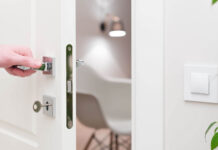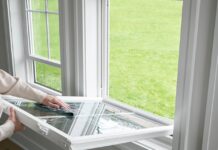Floorboards are one of the first things that come to mind when you imagine what a home’s floor looks like; however, there are many varieties of floorboards that all have their own unique and appealing look and characteristics. Knowing what each variety offers will make it easier to determine which type would be best suited to your project. Read on to learn more about the most common varieties, how they’re made, and how they differ from one another. Laminate Flooring Underlay is also a best option rhat make your floor more durable and strong.
Pros and Cons of Different Types of Wood
Many people will automatically think that hardwood flooring is best for their home or apartment because it has a more upscale look and feels. While hardwood is elegant, durable, and incredibly strong, it can also be expensive to purchase and difficult to work with. For example, hardwood can warp from moisture exposure or room temperature changes so it’s not always appropriate for bathrooms or kitchens where high temperatures are present. Laminates are made from layered pieces of wood that are then glued together; they come in a wide variety of colors and styles, but they aren’t as durable as real wood. In addition, they often have an odd smell while they cure before they’re completely ready for use. Also, you can prefer Carpet Underlay that looks very luxurious in your home.
Pros and Cons of Plank Tiles
If you have high traffic in your kitchens, such as an open plan or children, it’s best to opt for plank tiles. These are easier to clean than real wood, meaning you spend less time looking after them. It also means they’re more cost-effective as you don’t need to pay for professional cleaning services as often. However, if low maintenance isn’t important then installing solid oak flooring is a good idea; it looks stylish and is aesthetically pleasing. You’ll probably find yourself spending less time in your kitchen if that’s true Also, you can prefer JCW Acoustic Flooring looks very attractive at your home.
Pros and Cons of Solid Wood Flooring
Solid wood flooring is an attractive and sturdy choice for a home’s interior. These hardwood floors are usually made from oak, cherry, maple, or other varieties of hardwood trees. Planks of wood make up these types of flooring and may be installed on a concrete subfloor or over existing floors such as tile or vinyl. If you’re planning to install solid wood flooring in your home, here are some things you need to know about them
Tile vs. Wood Floors: Is There A Big Difference?
While wood and tile may seem like a matter of personal preference, there are some key differences in terms of how they’re laid and cared for. Tile is typically laid on top of concrete slabs that support it, while wood floors sit directly on top of a wooden subfloor. Wood can give off a squeaky sound when walked upon, so installing an underlayment first is common before placing down your planks. Lastly, you’ll notice tiles do not show scratches or dents as easily as wood, although you should be aware that tile floors are harder to maintain than their counterparts.
Tips on Selecting the Right Size Tile
When it comes to your bathroom or kitchen, you want every detail to look good and make a statement. One of those details is selecting which tile you want for your floors or walls. You must choose wisely because your tiles will be an extension of your personality, so choosing something that will reflect who you are can be very rewarding in terms of seeing how it looks when everything is finished. However, no matter how well you plan on picking out colors and styles ahead of time, some important things need to be taken into consideration when picking flooring tiles. The size of tiles can affect both design appeal and price, so knowing what size tile works best in each area is key before buying anything. Get More Information From Modern World.
Buying Guide For Hardwood Flooring
Buying hardwood flooring can be a lot more than simply going into a store and asking for it. First, you need to understand what makes one species of wood better than another; you also need to consider what type of wood is right for your particular application. If you’re remodeling your home or building a new one, here are some factors you should keep in mind when selecting floors.
Conclusion
So, now you know what floorboards are best to use for your particular situation. There are many different types of flooring products out there and you must choose correctly so that you get everything that you want. To recap, a total of 4 types of floorboards exist. The first 3 would be Laminate Wood. These are among some of the cheapest options on our list, but they do come with a trade-off in quality. If your budget is tight and you need a quick fix, then laminate wood might just work for you. Just remember that it will never look like real wood and will crack if left exposed to temperature changes or moisture often enough.































